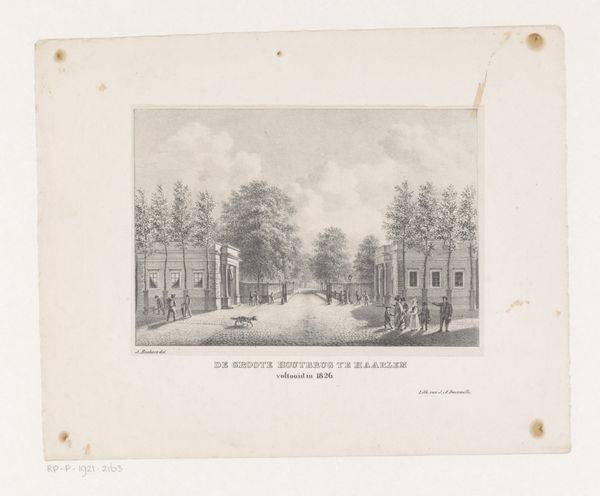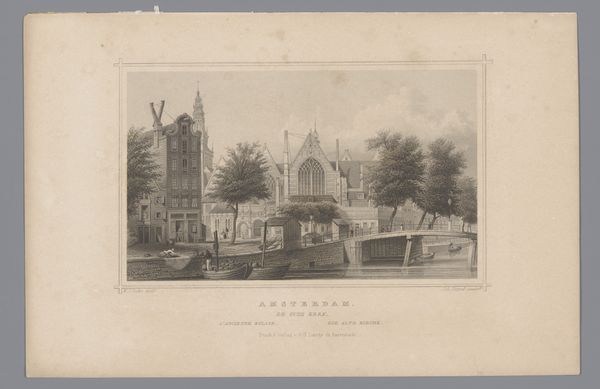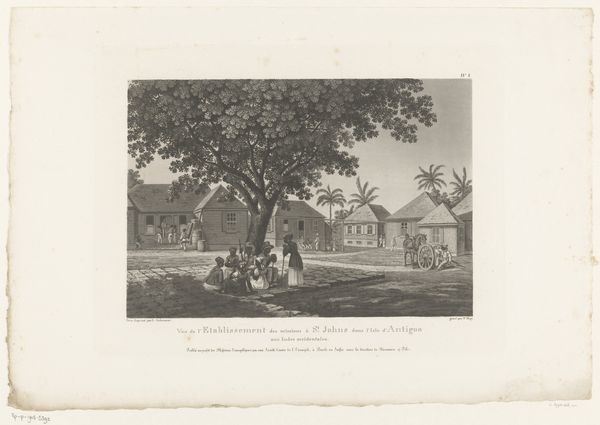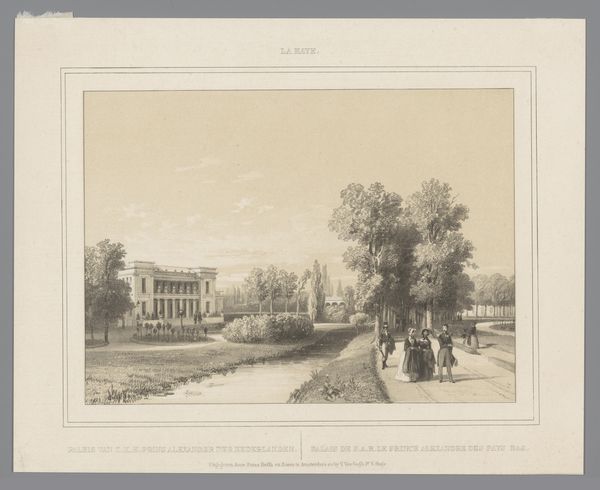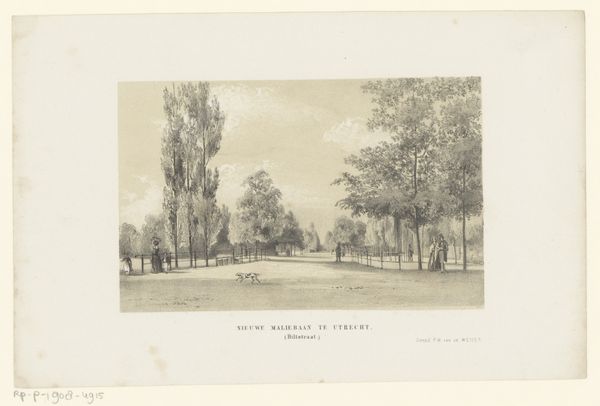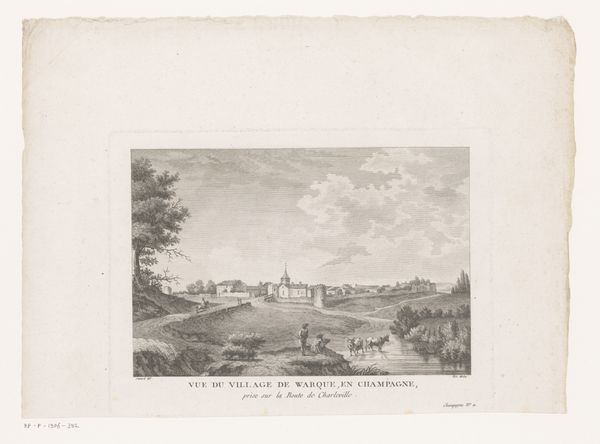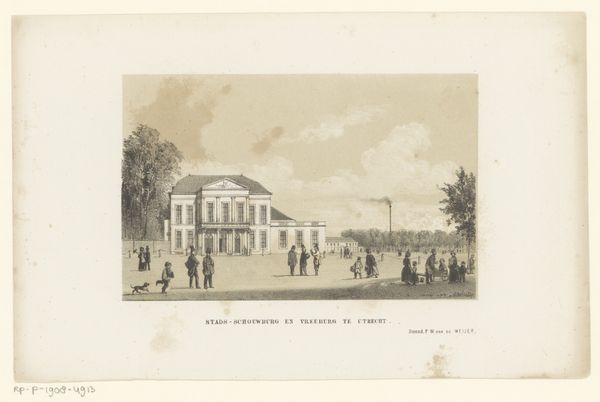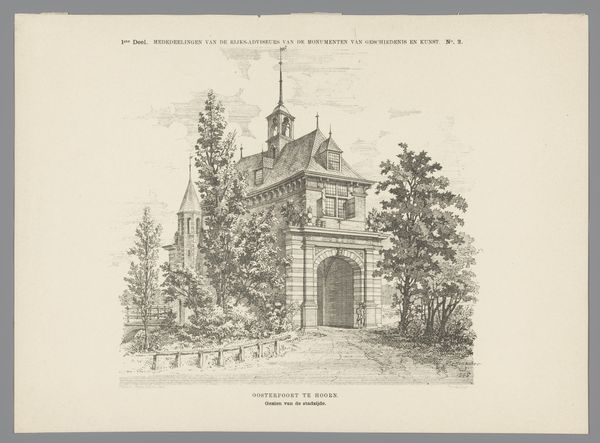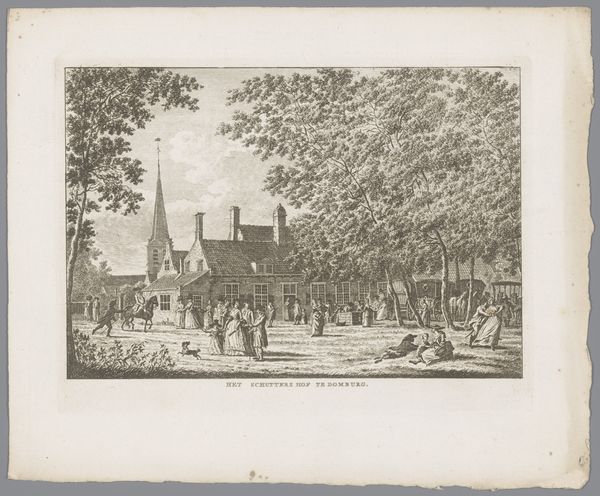
print, engraving
#
dutch-golden-age
# print
#
landscape
#
cityscape
#
engraving
#
realism
Dimensions: height 155 mm, width 240 mm
Copyright: Rijks Museum: Open Domain
Pieter Wilhelmus van de Weijer made this view of Janskerkhof in Utrecht using a technique called etching. The materiality of the print is critical here, as the image is made through a labor-intensive, indirect process. The artist would have coated a metal plate with wax, drawn into it with a needle to expose the metal, and then bathed the plate in acid, which bites into the drawn lines. The wax is removed, ink is applied, and the plate is pressed onto paper. This is not the direct touch of the artist's hand, but a chemical process of production, allowing for multiples. Van de Weijer used closely-spaced hatching and cross-hatching to create subtle tonal gradations, and a sense of depth. The choice of printing as a medium speaks to a modern sensibility, one that is aligned with the burgeoning print industry. Consider how the print medium mirrors the social scene depicted. It is a manufactured image of leisure, inviting the viewer to consume the scene, much like the figures strolling in the Janskerkhof itself.
Comments
No comments
Be the first to comment and join the conversation on the ultimate creative platform.
